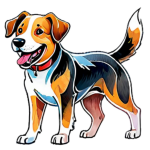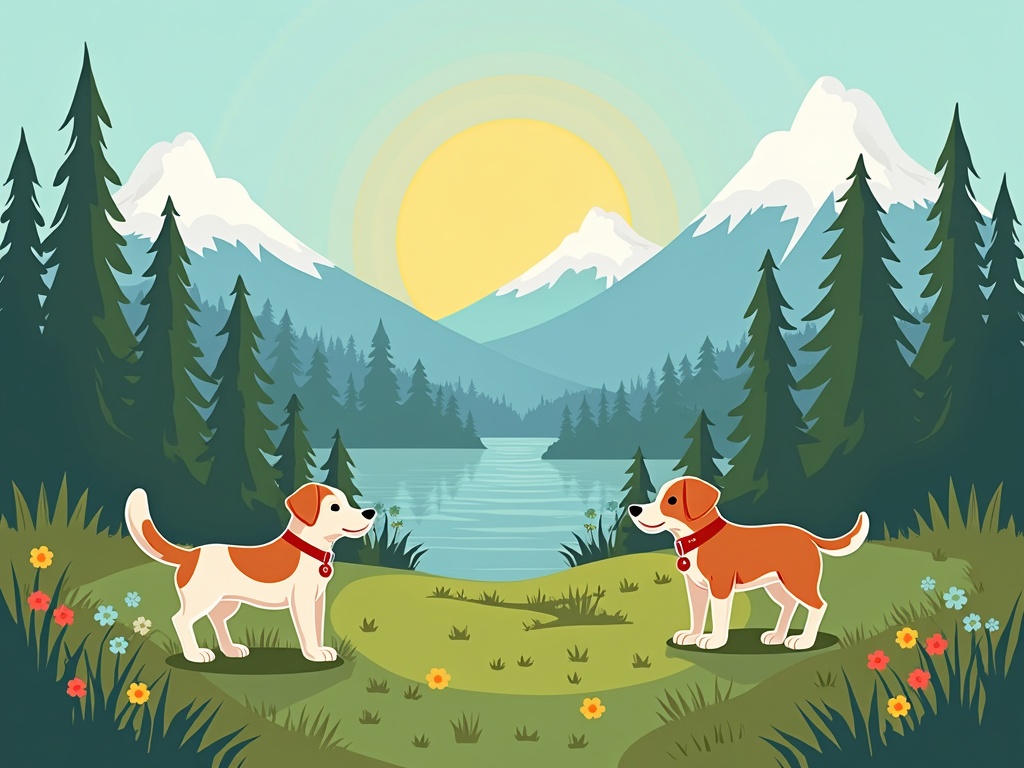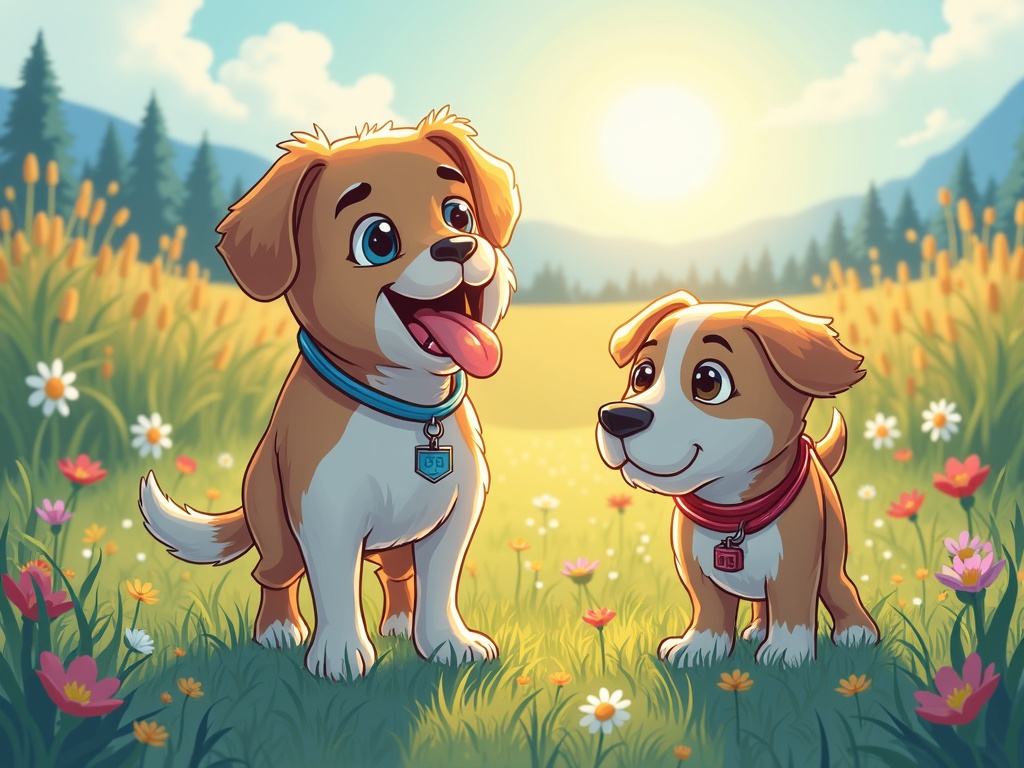Navigating the Great Outdoors: A Guide to Handling a Reactive Dog on Adventures
Imagine this: You're cresting a breathtaking mountain trail, the crisp air filling your lungs, the panoramic view stretching out before you. But instead of soaking it all in, you’re hyper-focused on the tightening leash in your hand, the frantic panting of your dog, and the impending explosion of barking and lunging as another hiker rounds the bend. This is the reality for many owners of reactive dogs who dream of sharing the joys of outdoor adventures with their furry companions. But don't despair! With careful planning, training, and management, you *cansafely and enjoyably explore the world with your reactive dog.
Understanding Reactivity in Dogs
Reactivity is a complex behavioral issue, and it's crucial to understand its nuances before embarking on any adventures. Simply put, a reactive dog displays exaggerated or inappropriate responses to certain stimuli, such as other dogs, people, cars, or even specific objects. These responses can manifest as barking, growling, lunging, snapping, or even attempts to flee.
What Causes Reactivity?
Several factors can contribute to reactivity:
- Genetics: Some dogs are predisposed to reactivity due to their breed or lineage.
- Lack of Socialization: Insufficient exposure to various sights, sounds, and experiences during puppyhood can lead to fear and anxiety later in life.
- Traumatic Experiences: Past experiences like dog attacks or frightening encounters can trigger reactive behavior.
- Medical Conditions: Underlying medical issues, such as pain or thyroid problems, can sometimes contribute to reactivity.
Differentiating Reactivity from Aggression
It's important to distinguish between reactivity and aggression. While a reactive dog *mayexhibit aggressive behaviors, reactivity is often rooted in fear, anxiety, or frustration. Reactive dogs are typically trying to increase distance from the trigger, while truly aggressive dogs may be more inclined to initiate a confrontation.
Pre-Adventure Preparation: Laying the Groundwork for Success
Before hitting the trails, thorough preparation is key. This involves training, management strategies, and careful planning.
Training is Paramount
Training is the cornerstone of managing a reactive dog. Focus on building a strong foundation of basic obedience commands, such as:
- Look at Me: This command helps redirect your dog's attention away from triggers.
- Leave It: Crucial for preventing your dog from fixating on or approaching unwanted stimuli.
- Heel: Enables you to maintain control and keep your dog close in potentially triggering situations.
- Place: Teaching your dog to go to a designated spot (like a portable mat) can provide a safe haven and help them de-stress.
Positive reinforcement methods, using treats, praise, or toys, are the most effective way to train a reactive dog. Avoid punishment-based techniques, as these can exacerbate anxiety and worsen reactivity. Consider working with a certified professional dog trainer experienced in reactivity.
Desensitization and Counter-Conditioning
Desensitization and counter-conditioning are two powerful techniques for reducing reactivity. Desensitization involves gradually exposing your dog to the trigger at a low intensity, while counter-conditioning pairs the presence of the trigger with something positive, like a tasty treat. The goal is to change your dog's emotional association with the trigger from negative to positive.
Essential Gear for Reactive Dog Adventures
Having the right gear can make a significant difference in managing your reactive dog on adventures:
- Sturdy Leash and Harness: A well-fitting harness that distributes pressure evenly is preferable to a collar, especially for dogs prone to pulling. A leash no longer than 6 feet is recommended.
- Muzzle (Optional): A properly fitted basket muzzle can provide an extra layer of safety and reassurance, especially in situations where you anticipate potential triggers. Muzzle training is essential before using a muzzle on an adventure.
- High-Value Treats: Bring plenty of your dog's favorite treats to reward positive behavior and redirect attention.
- Water and Collapsible Bowl: Staying hydrated is crucial, especially during strenuous activities.
- Waste Bags: Always clean up after your dog.
- First-Aid Kit: Be prepared for minor injuries.
- Emergency Contact Information: Carry your veterinarian's contact information and any relevant medical records.
Choosing the Right Adventure: Location, Timing, and Duration
Carefully consider the location, timing, and duration of your adventures:
- Start Small: Begin with short, low-traffic walks in familiar environments. Gradually increase the duration and difficulty as your dog becomes more comfortable.
- Scout the Location: Research potential destinations beforehand to assess the likelihood of encountering triggers. Look for trails that are known to be less crowded or offer wider paths.
- Choose Off-Peak Times: Avoid popular times when trails are likely to be busy. Early mornings or weekdays are often less crowded.
- Consider Seasonal Factors: Think about weather conditions. Hot weather can be challenging for dogs, especially those with thick fur. Be mindful of wildlife activity in certain areas during specific times of the year.
On the Trail: Managing Reactivity in Real-Time
Even with meticulous planning, unexpected encounters can happen. Having strategies in place for managing reactivity in real-time is essential.
Maintaining Awareness and Vigilance
Constant vigilance is crucial. Scan your surroundings and anticipate potential triggers. The sooner you spot a trigger, the more time you have to react and prevent your dog from becoming overwhelmed.
Creating Distance
Distance is your friend. If you see a trigger approaching, increase the distance between your dog and the trigger as quickly and safely as possible. Step off the trail, turn around, or find a wider area to create more space.
Redirection and Engagement
Before your dog reacts, try to redirect their attention to you. Use a high-value treat, a favorite toy, or a verbal cue to engage them. The goal is to keep them focused on you and prevent them from fixating on the trigger.
The Emergency U-Turn
Practice a reliable emergency U-turn. This involves quickly turning around and walking in the opposite direction when you encounter a trigger. Reward your dog for following you and maintaining focus.
Communicating with Others
Be prepared to communicate with other hikers or dog owners. A simple My dog is in training and needs space can go a long way in preventing unwanted interactions.
Post Adventure: Recovery and Reflection
Adventures can be mentally and physically taxing for reactive dogs. Proper recovery is important to prevent setbacks.
Decompression Time
Allow your dog plenty of decompression time after an adventure. This might involve quiet time at home, a relaxing massage, or a calming activity like chewing on a bone.
Observe Your Dog's Behavior
Pay attention to your dog's behavior in the days following an adventure. Are they more anxious or reactive than usual? This information can help you adjust your future plans and strategies.
Celebrate Successes
Acknowledge and celebrate your successes, no matter how small. Each successful adventure is a step in the right direction.
When to Seek Professional Help
While you can implement many strategies on your own, sometimes professional help is necessary. Consult with a certified professional dog trainer or veterinary behaviorist if:
- Your dog's reactivity is severe or worsening.
- You are feeling overwhelmed or unsure how to proceed.
- Your dog has injured someone or another animal.
- You suspect that a medical condition may be contributing to your dog's reactivity.
The Rewards of Adventuring with a Reactive Dog
It requires patience, dedication, and a whole lot of understanding, but adventuring with your reactive dog is possible. The bond you'll forge as you navigate challenges, celebrate small victories, and explore the world together is unlike any other. The fresh air, the exercise, and the shared experiences will benefit you both, enriching your lives in countless ways. It’s about adapting the adventure to suit your dog’s needs, instead of forcing them into situations they can’t handle. So, take a deep breath, pack your bags (and your treats!), and start planning your next adventure. Your reactive dog will thank you for it, one careful paw-step at a time.


